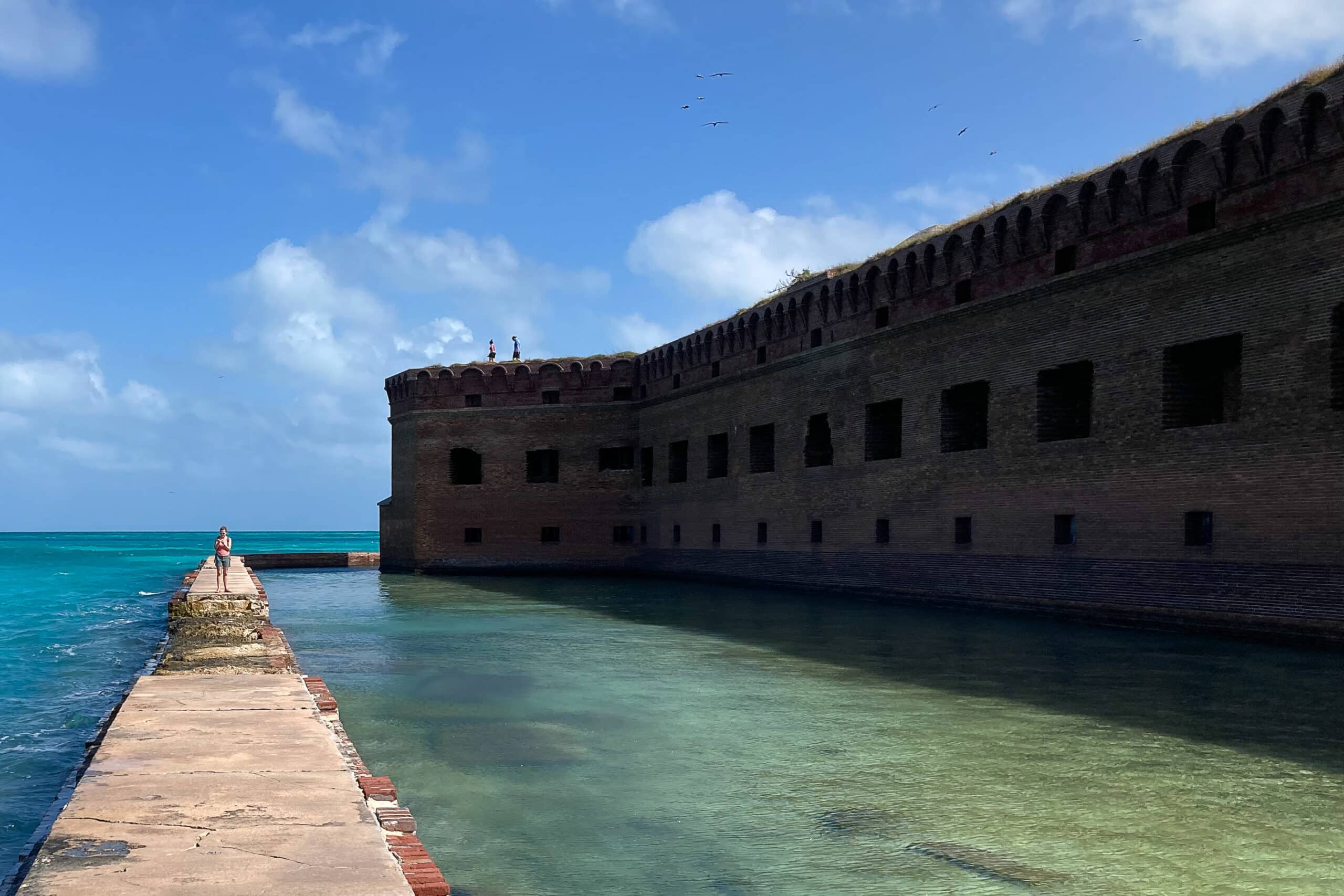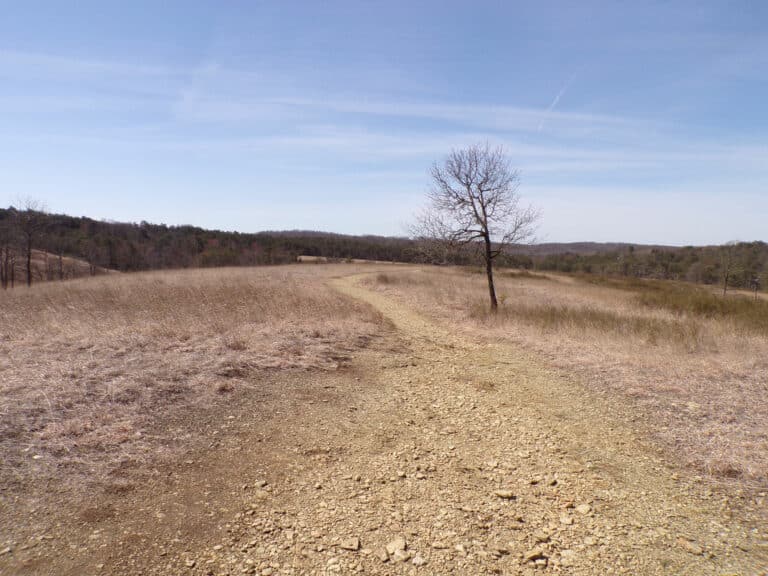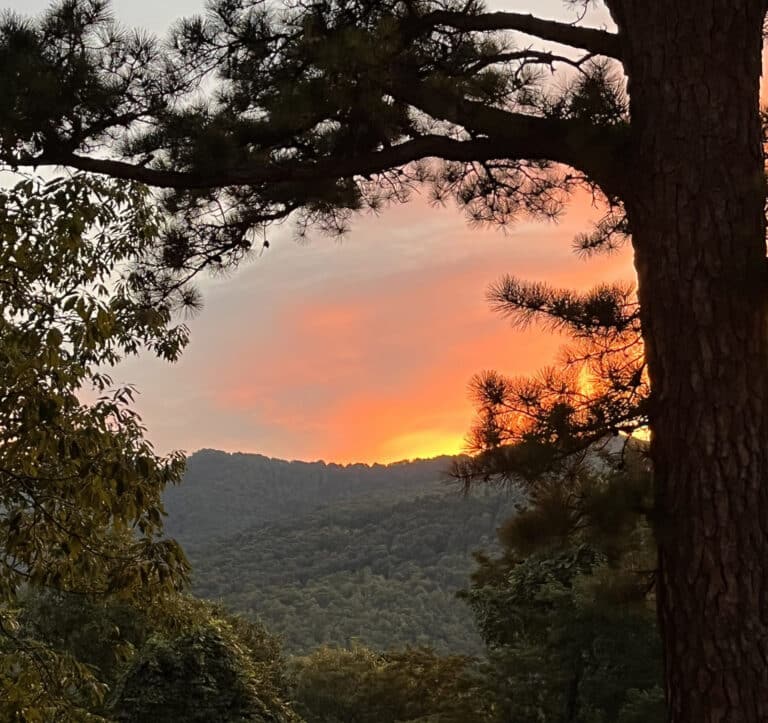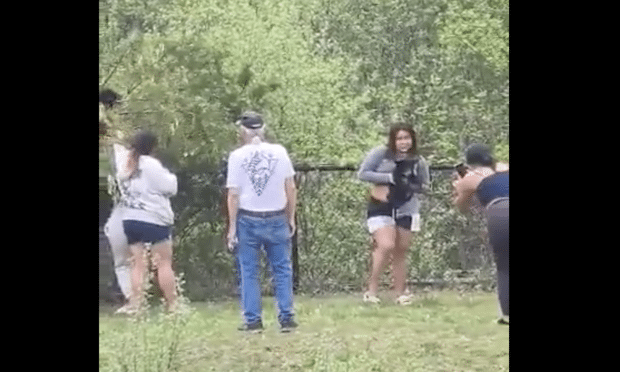Whether padding through the wild Everglades, biking pine-laden paths, or exploring subtropical Dry Tortugas National Park, winter is the best time to cruise through Florida for a variety of adventures.
We were just past Jacksonville, driving south on forest-lined I-95, when the temps began to rise.
While watching for swerving vehicles, I noticed the ambient degrees creep upward from the high 50s to mid-60s. We’d reached the peninsula, surrounded by warm waters on both sides. Also, crazy drivers, I thought, as a sports car careened through traffic at 90 mph. Suddenly, the driver slammed the brakes, cut off a semi, and took the next exit.
It was December 1, and my wife and I were embarking on a 10-day road trip to South Florida. We’d never explored much below St. Augustine, mostly because we don’t consider ourselves “Florida people.” We’re more about inland adventures—like mountain biking, whitewater paddling, and summit hiking—than beach lounging or yachting.
That said, several parks had long intrigued us. The mild winter, when bugs and humidity are down, seemed the right time for a whirlwind adventure. Plus, the weeks between Thanksgiving and Christmas vacations offered a lull in tourism. Frankly, we figured we’d tick the boxes and probably never return.
An Undeveloped Coast with Space Rockets
Departing the next morning from a motel, we drove across the causeway to Merritt Island National Wildlife Refuge and Canaveral National Seashore. With 312 square miles of wild beaches and wetlands, the combined units represent the largest undeveloped portion of Florida’s east coast.
After strolling a short nature trail, we dropped inside the visitor center to buy an $80 national parks pass. Except the register was cash-only, and we forgot to hit an ATM. In a state known for illegal slot machines, I busted out my first “Florida” move.
“Would you take quarters?”
The retired volunteer blinked, then chuckled. “By law, we are required to accept all forms of legal currency.”
The small staff—and my embarrassed wife—watched, as I retrieved a heavy plastic bag filled with quarters, rolled and loose. I have them in case the apocalypse hits and we hole up in a laundromat.
With limited time, we cruised Wildlife Drive out to the Manatee Observation Deck. We’d never seen these so-called sea cows in person. Despite murky canal waters, the round gray bodies and fan-like tails were impressive. But we hoped for a closer look while kayaking atop clear waters later in our trip.
One reason these pristine parklands exist is NASA, which acquired the swampy area in the 1960s. Much went unused after the construction of the adjacent launch facility. So, that’s where we headed next: the Kennedy Space Center Visitor Complex. We had a great time circling towering rockets, authentic spacecraft, and experimental spacesuits.
Then we returned to the interstate for what felt like a NASCAR race south. Aggressive passing. Brakes squealing. Not only was the shoulder another lane, sometimes the grass was a lane, too.
Like a 1980s Film Shot on Location
We arrived at Boyd’s Key West Campground just after dark. While building our tent, we admired moonlight shimmering on the water. After an early night, we woke before sunrise. Driving the main boulevard toward the ferry terminal, we encountered another classic Florida scene: a wrecked and abandoned sedan and tire marks running onto the sidewalk with two night cops in the roadway, struggling to carry the palm tree toppled by the sedan.
During the catamaran ride to Dry Tortugas National Park, we sped at 30 knots through translucent waters past the uninhabited Marquesas Keys. On the top deck of the Yankee Freedom, salt spray flew through sunny skies. The jovial tour guides mixed pertinent info with knee-slappers, while passengers searched for dolphins.
Two hours later, we approached Garden Key, where a massive red-brick fortress rises three stories above the Gulf. Built in the 1860s to protect U.S. shipping routes, the hexagonal Fort Jefferson is the highlight of a unique park that sees only 75,000 visitors annually. With the ferry limited to 200 passengers per day, the pricy tickets can sell out months ahead. The big question: is it worth the cost and long drive?
After disembarking, most passengers split into two groups. Half aimed for the beaches, while the rest went to the parade ground and joined a ranger-guided tour. Not us. I wanted maximum value. Thus, I’d used the self-guided brochure to devise a walking route through every chamber, casement, magazine, quarters, and bastion possible. I might have climbed inside the cisterns if allowed.
My wife’s response was her classic look: here we go again. So, on an island only a quarter mile wide, we proceeded to walk nearly four miles. Upon emerging from the sallyport, my wife glanced longingly at the beach.
“Not so fast,” I said. “We gotta walk the sea wall enclosing the moat.”
“Of course we do,” she said.
Finally, we passed the small campground and arrived at the snorkeling beach. After donning equipment, we plunged into the mellow waves for some underwater exploration. For over an hour, we followed subtropical fish swimming around sea grass, coral stacks, and the brickwork.
“I’m going to swim around the fort,” I told my floating wife.
“Of course you are,” she said, waving goodbye.
During the return ride, the catamaran became a floating bar. The guides transformed into wise-cracking bartenders, and this uber-Floridian scene felt like a 1980s movie shot on location. My new favorite cocktail-slinger explained he bought a boat to visit the park on his off days. And when the guides recreate where they work—whether an Appalachian river or out in the Gulf—you know it’s a special place.
So yeah, Dry Tortugas was worth it. One of the most fun national park day trips we’ve ever taken. If we return, we’ll try to snag a limited camping slot.
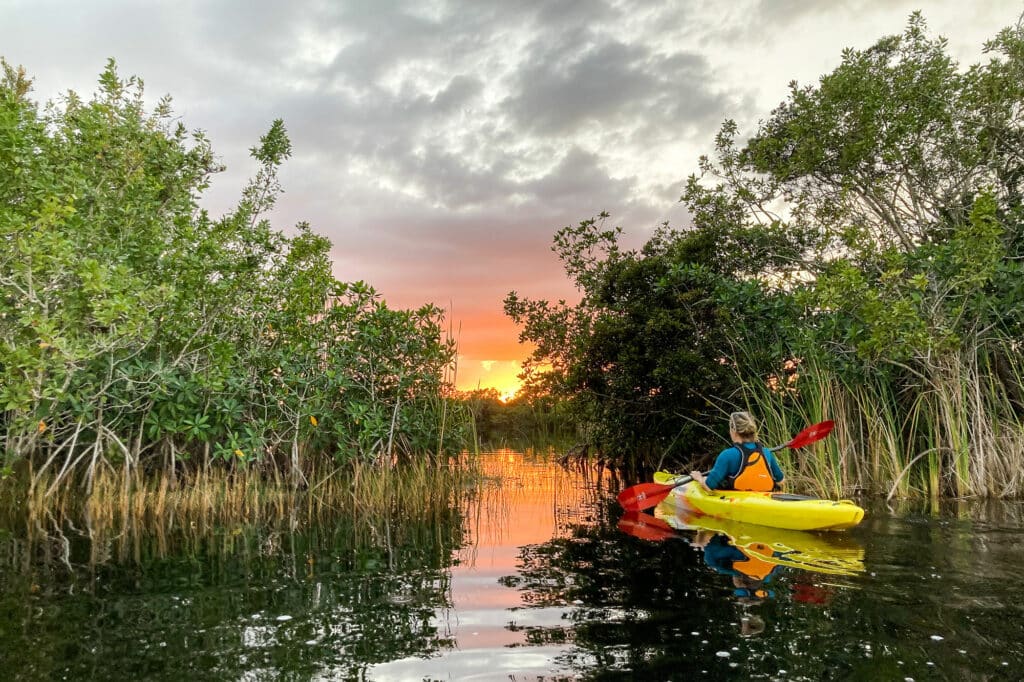
Wild Days and Everglade Nights
After a nice evening strolling old Key West and dodging rowdy tourists like we were locals, the next morning we drove north on the famous Overseas Highway. The sparkling Keys were pretty, but we skipped past several promising state parks. We’d reserved the bulk of our trip—four days—at Everglades National Park.
At the Ernest F. Coe Visitor Center, I inquired about maps and conditions for biking and paddling routes. We obtained plenty of the former, but regarding the latter, we got wide-eyed stares. “We’ll figure it out,” I declared, and I received another stare, this one from my narrow-eyed wife. At Royal Palm, we walked through wetlands with gators and birds and into a forest with gumbo-limbos, a native tree with peeling bark that reminded me of manzanitas and madrones out west.
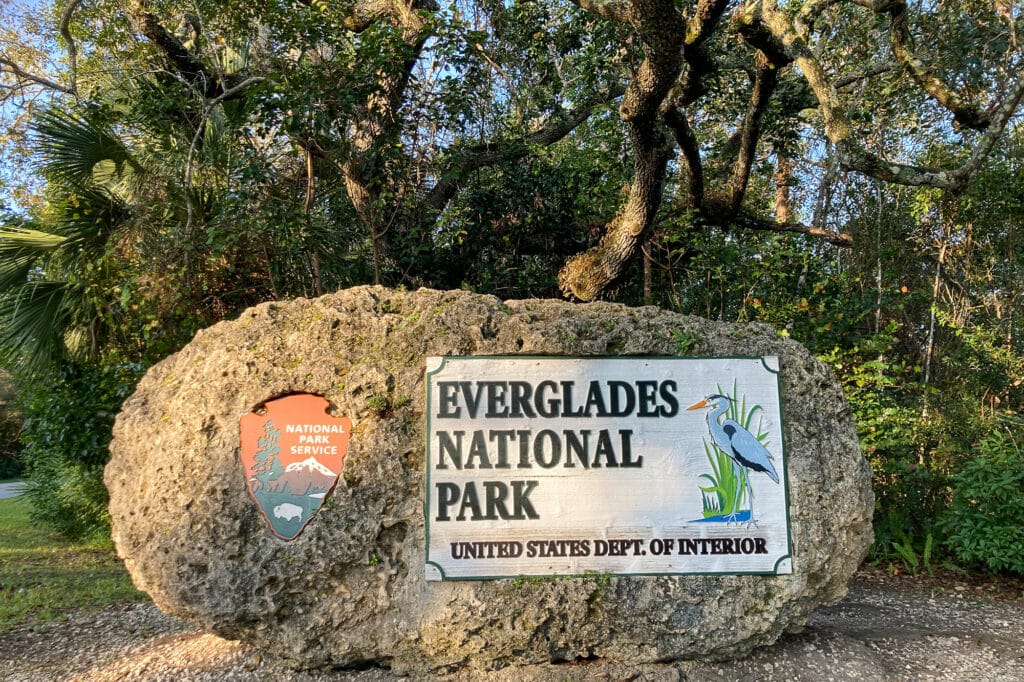
After setting up at Long Pine Key Campground, we hopped on mountain bikes. A 14-mile out-and-back ride took us on a mellow dirt path through the Pinelands. This forest of matchstick slash pine represents one of the eight major ecosystems found within the 2,538-square-mile national park, the third largest in the Lower 48.
That night, we were getting ready for dinner when the bugs appeared. My wife was organizing her things at the open truck door, so I suggested she get inside quick. Big mistake.
“If you rush me, it only takes longer,” she warned, clearly tired after another long day.
I raised my hands in surrender. So, about 2,538 mosquitos joined us inside the truck for the 30-minute drive to dinner. While swatting our way along a rural highway, the wild Everglades night grew in scope. Four dudes in caged UTVs surrounded us, speeding past in the opposite lane and on the shoulder. I stopped at the next intersection, but they ran the sign, and one nearly collided with a farm truck.
Sure Felt Like a Nine Mile Canoe Trail
The next day, we explored the main park road. We saw a dwarf cypress forest. Massive mahogany trees on a hardwood hammock, essentially a vegetated island surrounded by freshwater slough. A preserved Cold War-era missile base. The Flamingo Visitor Center at the edge of buggy Florida Bay.
Our main event was paddling the Nine Mile Pond Canoe Trail—supposedly a mellow five-mile loop. We started at 2pm, right as a guided kayak trip returned, figuring we had plenty of time. But perhaps the name is more like a heat index? Because it sure felt like paddling nine miles.
The first 1.5 miles involved 30 minutes of easy navigating through fascinating mangrove tunnels. The next three miles felt like paddling through soggy cereal, given the dense mats of periphyton algae. This took three hours. Along the way, we discovered the water-trail markers had been disturbed by past storms and only partly restored. We frequently lost time searching for the route.
Typically, the markers would go 10, 11, 12, and so forth, at hundred-foot intervals. But occasionally, the markers would go 54, 55, 55a, 55b, 55c, and onward, with the distance between increasing, up to a quarter mile. With the sun getting low, we started getting worried. We carried a compass and headlamps but did not want to paddle the Everglades after dark. Then the markers went weird again.
“It’s that stupid A, B, C thing!” blurted my exasperated wife.
I kicked myself for not kayaking first and doing everything in reverse. Luckily, the periphyton mats soon ended. The markers returned to normal. The final mile was through mangrove tunnels and blackwater lakes. The vibe was saved with a lovely sunset on the water, a scene we would have missed had we not paddled until dusk.
A River of Grass and Ten Thousand Islands
Our final morning, we biked the Shark Valley Tram Road. At the southernmost bend in the 15-mile paved loop, we locked bikes and walked up the observation tower. Built during the Mission 66 era, this modernist cement structure closely resembles the Clingmans Dome tower in the Smokies.
From the top deck, we surveyed a vast slough, with freshwater flowing past sawgrass and hardwood hammocks toward the sea. Called the River of Grass, the poetic name was bestowed by author Marjorie Stoneman Douglas in the 1940s. Her efforts shifted impressions of the Everglades from a worthless swamp that should be drained to a dynamic ecosystem worth preserving.
In the northwest corner of the park, we moved camp to the Chokoloskee Island Resort. Then we ferried our kayaks through the currents of Chokoloskee Bay into the Ten Thousand Islands. At mid-tide, some channels were like swift rivers. I really enjoyed eddy hopping from island to island, but my wife found some currents too fast and squirrelly. After exploring 20 islands, we paddled back to Chokoloskee Island and visited the Smallwood Store, a historic trading post and museum.
Encounters with Diseased Monkeys and Solitary Manatees
We had one final stop on our long drive north: Silver Springs State Park. From the campground, we walked trails to the Silver River. There we met a friendly Midwesterner who visits Florida every winter for outdoor adventures. Together, the three of us watched a tree-climbing monkey that likely had herpes.
More precisely, a rhesus macaque descended from a troop released on a nearby island in the 1930s by a wacky glass-bottom boat captain. He wanted a tourist spectacle but didn’t realize the macaques had the B virus—and could swim. Today, these wild animals roam parts of Florida. So that all checks out.
Our last morning, we launched kayaks into crystal-clear waters on a mission. Silver Springs is definitely on the tourist trail, but the crowd was friendly paddlers. Tangled jungle, draped in Spanish moss, created a beautiful shoreline for two miles. Turning back upstream, we spotted the first one. About ten feet deep. A round gray body and fan-like tail.
“Manatee!” chirped my wife.
Twenty minutes later, we encountered a herd and baby. As the paddling crowd gathered, we split off. So did one massive manatee. We paddled alongside this solitary sea cow for nearly 10 minutes, just the three of us.
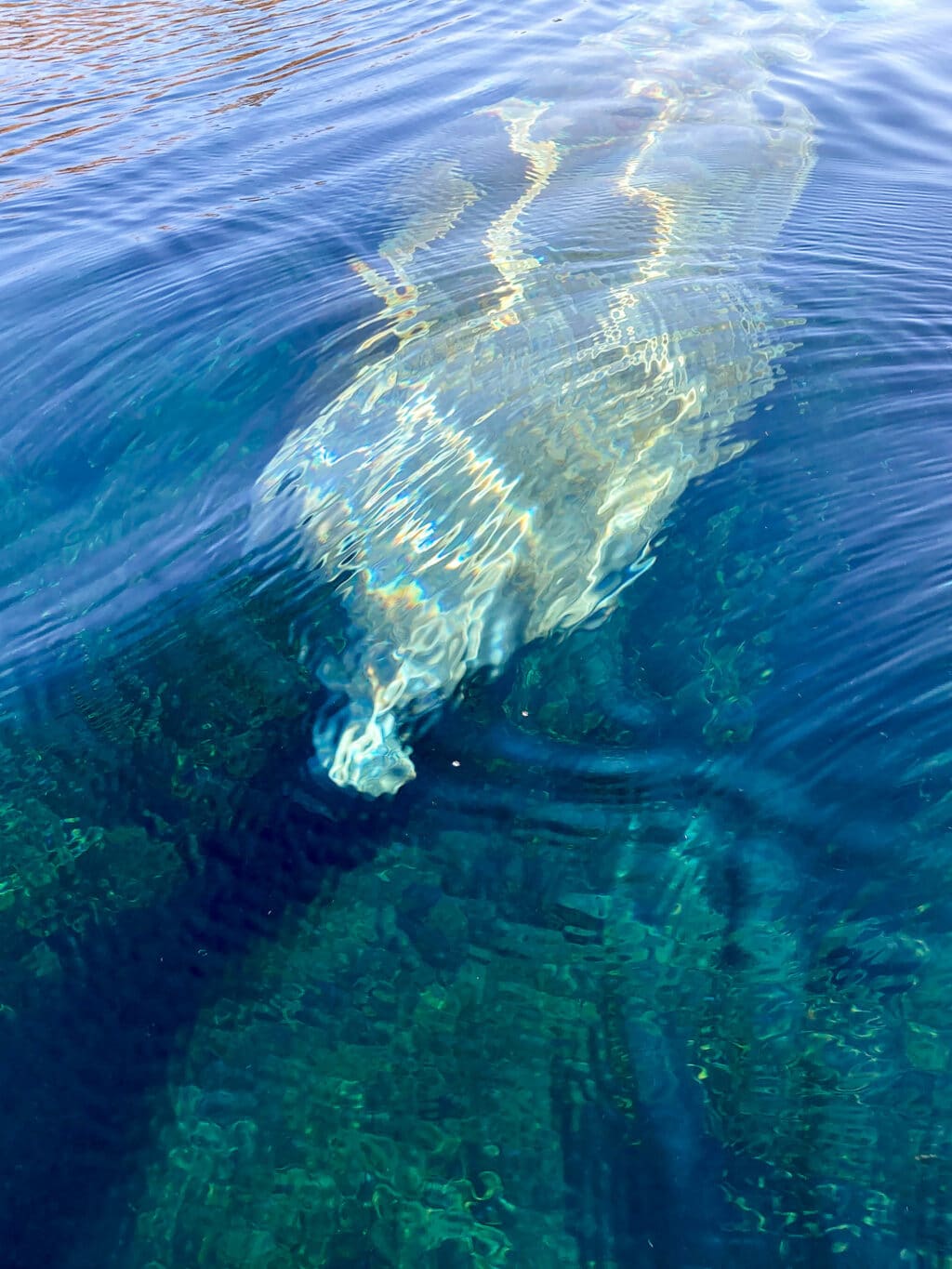
The water was like aquarium glass. Despite its bulk, the manatee swam gracefully, meandering occasionally, which offered views of its droopy snout and stubbly flippers. My wife and I have paddled across the country, and this was one of the best days yet.
Our trip was nearly complete. The long drive north allowed plenty of time to debrief. Was it worth it? Would we ever return? Sure, the highways felt a little dangerous, but there were more parks to visit, more forests to explore, and more manatee-filled rivers to find. When it came to outdoor adventures during wintertime, turns out we were “Florida people” after all.
Mike Bezemek is an adventure writer and photographer of stories and books, including Space Age Adventures: Over 100 Terrestrial Sites and Out of This World Stories.
Cover photo: The Fort Jefferson moat wall at Dry Tortugas National park. All photos by Mike Bezemek
